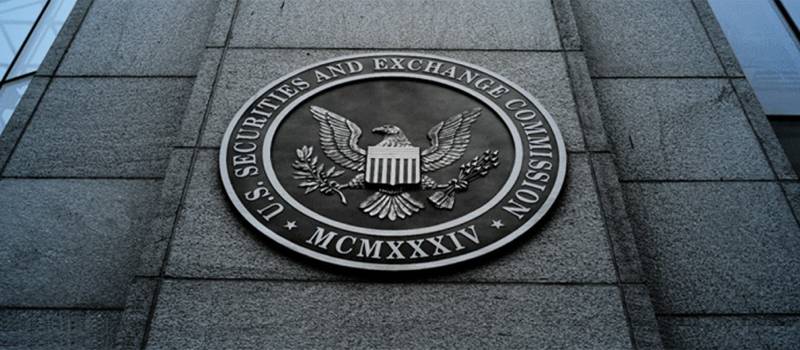US FEDS WANT TO TAME ‘WILDCAT’ STABLECOINS LIKE TETHER AND USDC
A professor of finance at Yale, Gary Gorton, and US Federal Reserve attorney Jeffery Zhang penned a research paper entitled “Taming Wildcat Stablecoins,” which was published in the Social Science Research Network (SSRN). The paper strongly urges supervision of Stablecoins. They argued that introducing a central bank for digital currency (CBDC) would help avoid historic mistakes, and then they described Stablecoins as privately produced money, comparing it with the 19th century’s Free Banking Era. Gorton and Zhang, in their paper, concluded that the Free Banking Era in the United States failed because of the use of private banknotes and was responsible for the 19th-century chaos and panic. This led to runs-on-demand deposits and the inability to satisfy the no-questions-asked principle (NQA). These authors warned that, “the newest type of private money is now upon us—in the form of Stablecoins… privately produced monies are not an effective medium of exchange because they are not always accepted at par and are subject to runs.” While sounding the alarms regarding “the consequences of porous regulation,” the authors proposed to remedy the situation with interventions, “including regulating stablecoin issuers as banks and issuing a central bank digital currency.” These things, they hoped, would eliminate runs on Stablecoins, while ensuring the NQA principle. The dynamic duo divided cryptocurrencies into three categories: 1) The so-called “fiat cryptocurrencies,” like Bitcoin (BTC), that are not backed by anything and lack intrinsic value. 2) The specialized “utility coins,” like the JPMorgan coin that are limited to internal use, and 3) Stablecoins like Tether (USDT) and Facebook’s Diem, formerly known as Libra (LBR), which are backed with government fiat currencies and “aspire to be used as a form of private money.” They wrote, “Stablecoins are distinct from fiat cryptocurrencies like Bitcoin because stablecoin issuers attempt to keep their prices at par. Fiat cryptocurrencies have very volatile prices—rising and falling by double-digit percentages in a matter of weeks or months.” Earlier in the week prior to last, the US Federal Reserve Chair Jerome Powell said one of the main arguments for the central bank to issue digital currency is that it could undercut the need for private alternatives. “Fiat-crypto” Bitcoin doesn’t seem to mind the Fed’s regulation plans.
NO SHILLING DOGECOIN OR SHIBA INU? HOW TIKTOK’S CRYPTO BAN HELPS THE SPACE

Funny how meme coins like Dogecoin, Shiba Inu, and Baby Doge Coin gained notoriety throughout 2020 as the crypto markets rose. This caught many people off-guard and came with much surprise. Of course, one of the biggest DOGE cheerleaders was Elon Musk, the world’s richest man, and he proved how sentiment for fleeting shooting stars can turn quickly to disdain. We all know how Musk made incessant tweeting almost unbearable and frivolous. Every time he mentioned Dogecoin, at first, DOGE would jump by double-digit percentages in the minutes afterward. Indeed, the first few Musk tweets sent DOGE roaring over 100%, attracting millions of people to the coin, with some even taking it as a ‘serious’ investment. This would eventually send the price of the token skyrocketing to a peak price of $0.70, with an $86 billion market cap. They say that power corrupts, and that absolute power corrupts absolutely. No wonder regulators think that such whimsical behavior deserves a heavy-handed smack of restrictions. They didn’t want just a little, they wanted it all, but they did not want to put the work in to earn their rewards. Unfortunately, these types of endorsements didn’t take long to become a ‘trend’ on social media. On TikTok, one of the world’s biggest video-sharing apps, crypto circles became almost an overnight rage, and soon teenage investors with models regarding the trending topic exploded for even more views. Somewhere in-between the waning crypto interest is where troubles bloomed. TikTok, which is owned by China’s ByteDance, distanced itself from all things promoting crypto, and they effectively banned the rising and dedicated crypto hopefuls. Some in the crypto space welcomed this move. Justin Kline, co-founder of Markerly, wrote in a note to CryptoSlate: “Cryptocurrencies are extremely volatile. Big risk, big reward. But for impressionable young folks on social media hoping to be the next overnight crypto millionaire, these actions can have an incredibly detrimental impact on their lives and finances. Dogecoin has fluctuated through massive ups and downs in the last few months, seemingly all orbiting around the behavior of Musk. It’s become clear that there needs to be more regulation around all this; crypto is getting too prominent to still function as the Wild, Wild West.” Kline believes that TikTok’s ban on promotional advertising could soon be adopted by other social media platforms, especially those looking to reduce their participation in the world of crypto volatility.
Kline added, “I could see other platforms following suit and instituting similar bans on sponsored crypto posts in an attempt to avoid controversy. But even if other similar bans don’t go into effect on other platforms, I think this effort from TikTok will provide a much-needed reset and reexamination of how influencers are operating in the crypto space.” He advocated for such bans to happen sooner rather than later. “We could see other apps use this as an opportunity to tighten up their policies and clamp down on speculative, unregulated posts before the situation gets out of hand or TikTok crypto influencers migrate to their platforms, attempting to recreate the same environment elsewhere.” It is such a shame that unregulated greed and power shows just how destitute many people in the world are today, even Elon Musk. Or is he just compromised? It is hard to argue with Kline’s thoughts since there have been so many examples of blatant pump-and-dumps, Ponzi schemes, and outright scams running rampant during the past year.
$540 MILLION ‘REKT’ AS TOP CRYPTOS PLUNGE OVERNIGHT. HERE’S THE AFTERMATH

Hell’s Bells! Bitcoin dropped to under $30,000 early last week, sparking a selling frenzy (similar to a shiver of sharks during a feeding frenzy) in the crypto market—one that led to half a billion dollars in liquidations, $285 million of that in BTC alone. Over 113,000 traders were liquidated on various crypto exchanges, according to data from the analytics app Bybt, with the largest single liquidation order being a Bitcoin trade valued at $4.5 million and occurring on futures powerhouse Bybit. Over ninety percent of these traders, or $494 million worth of assets, were in long positions, betting on prices moving upward. A relatively smaller $48 million, or 9% of all traders, were short. However, they, too, ended up losing money due to much higher leverage and/or shorting a sudden uptick. Bitcoin traders took the majority of the punishment, with over $250 million worth of Bitcoin trades being liquidated, followed by Ethereum trades ($131 million), XRP trades ($24 million), and Dogecoin trades ($11 million). Others high up on the liquidation list were $4.7 million in Ethereum Classic trades, $3.74 million in Litecoin trades, and $3.41 million in Shiba Inu coin trades as of Tuesday morning of last week. $220 million of all liquidations occurred on Bybit, followed by $122 million on OKEx, and $69 million on Binance. On the other side of the coin (hah!), Deribit and Bitfinex took on some of the lowest liquidations with just $4 million and $629,000 in liquidations, respectively.
SEC LAYS THE SMACKDOWN ON ALLEGED $12 MILLION CRYPTO SCAM ‘PROFIT CONNECT’

On Thursday of last week, the U.S Securities and Exchange Commission (SEC) had acted against crypto fraud perpetrated by Profit Connect Wealth Services Inc. This was in the form of an emergency action filing, and the U.S securities regulator obtained a temporary restraining order, freezing the company’s assets in a bid to stop Profit Connect from operating. This may be reaction since the SEC’s reputation had taken a hit following its lawsuit against Ripple. In that action, XRP holders argued that the regulatory body acted contrary to its primary mandate to protect investors. In this latest filing, the SEC demonstrates that it hopes to continue to protect investors by holding bad actors accountable. Profit Connect guaranteed massive crypto gains and since May 2018, 86-year-old Joy Kovar and her son, 54-year-old Brent Kovar, were said to have raised over $12 million from around 277 retail investors in an elaborate scheme involving the use of advanced AI technology. The Kovars allegedly told victims that their money would be invested in securities trading and crypto tokens based on the recommendations of an “artificial intelligence supercomputer.” They had posted that their supercomputer was able to consistently generate huge returns, which enabled Profit Connect to guarantee investors fixed interest returns of between 20% and 30% a year, with compounding interest each month. The SEC alleges that the defendants did not use the money obtained to trade securities or buy crypto, but instead, they misused funds in several ways, including transferring to Joy Kovar’s personal bank account, paying promoters, and setting up a Ponzi-like affiliate system to bring more people on board.
Michele Wein Layne, the SEC’s Los Angeles Regional Office Director, said investors should be cautious of people who offer guaranteed returns with no risk. “As we allege, the defendants targeted investors who were looking for safe products for their retirements and their children’s educations, offering a money back guarantee on top of the phenomenal results they promised to achieve using a purported ‘supercomputer.”
We all must be on guard against Ransomware, even though recent data from Chainalysis shows that crypto crime is falling. Researchers found criminal activity accounted for just 0.34% of all crypto activity in 2020. During the previous year, this figure stood at 2.1%. Since 2017, scams have made up the biggest type of illicit activity. While 2020 is no different, Chainalysis noted a significant rise in ransomware activity while scams fell. In their report, they noted, “However, the big story for cryptocurrency-based crime in 2020 is ransomware. That may sound counterintuitive, as ransomware accounted for just 7% of all funds received by criminal addresses at just under $350 million worth of cryptocurrency. But that figure represents a 311% increase over 2019.” Of importance to note is that ransomware falls outside of the jurisdiction of the SEC, who are tasked with handling securities fraud. As such, protecting yourself should also include being careful about clicking links from unreputable sources.
JIM CRAMER CALLS TETHER (USDT) THE ‘ACHILLES HEEL’ OF CRYPTO WHILE USDC GETS AUDITOR GREENLIGHT

Tether, “the Achilles heel” of cryptocurrency, brings further risk exposure to markets and is what triggered last week’s sell-offs, Jim Cramer said. “Tether, which is the giant stablecoin, could be basically the Achilles heel of the entire Bitcoin operation, which is very worrisome because we don’t know what they own,” he told The Street. At the same time, Circle’s USDC stablecoin got the go ahead from auditor Grant Thornton, who signed off on its Account Reserve Report. Tether FUD is nothing new and worries that USDT issuance is not being backed one-to-one by dollars (or similar liquid assets) has since proven true. Even so, this revelation doesn’t seem to affect its standing. Nonetheless, with USDC emerging as a worthy contender, it leaves one to wonder if Tether’s time at the top is finally through. Just last month, Eric Rosengren, the President of the Federal Reserve Bank of Boston, made it known that Tether is not good for the stability of the financial system. He was referring to the potential impact the leading stablecoin could have on the short-term credit market. “The reason I talked about Tether and stablecoins is if you look at their portfolio, it basically looks like a portfolio of a prime money market fund but maybe riskier. [Tether] has a number of assets that, during the pandemic, the spread got quite wide on those assets.” Rosengren pointed out that a significant proportion of Tether’s reserve assets may not return their stated yield during a mass sell-off, such as in the case of a “bank run,” where USDT holders would want to exchange for dollars all at once. All of this came about following the settlement with the New York Attorney General (NYAG), wherein Tether execs agreed to submit regular reports which would include the composition of its reserve funds. After Tether had released its first report in May this year, observers noted that 76% of its reserves were made up of “cash and cash equivalents.” But further breakdown showed that less than 4% of that 76% was, itself, in cash.
Cramer was speaking to ex-CFTC Chair Timothy Massad when he raised the point that Tether was effectively “kicked out of New York” by the NYAG. He said that he felt it was unbelievable that more people had not been concerned by this action. “Then I read that New York, that AG settlement, they’ve been basically kicked out of Wall Street, out of New York. To me, Tim, that’s highly unusual, and you went to law school with me. If New York decides you can’t do business here, shouldn’t we be more worried than most people are about this?” Massad responded, “I think we should be,” and went on to suggest that although no fine was leveled, the NYAG did request more disclosure from Tether. Meantime, in a bid to overthrow Tether’s dominance, USDC is emerging as a possible candidate. Late last week, Mastercard announced a pilot program, in partnership with Circle and others (including Paxos), to further integrate cryptocurrency and legacy payment rails. What this means, essentially, is that USDC will act as a bridge between fiat and other cryptocurrencies in the new system. The Executive Vice President of Digital Asset and Blockchain Products, Raj Dhamodharan, said, “Through our engagement with Evolve, Paxos, Circle and the larger digital assets community, Mastercard expects to deliver on our promise of consumer choice to provide options to people around the world on how and when to pay.” Furthering this movement, the accounting firm Grant Thornton signed off on USDC’s Reserve Account Report last week, wherein they commented that US-dollar-denominated-assets held in segregated accounts closely reflect the $22 billion of USDC in circulation. At present, the USDT market cap and 24-hour volumes still dominate those of USDC, and as such, despite the positive developments, it does not now appear that a flippening will be happening anytime soon.
BITCOIN COULD FALL TO $15,000, SAYS GUGGENHEIM CHAIRMAN WHO PREDICTED 50% DIP IN MAY

Scott Minerd, the chairman and chief investment officer of asset management giant Guggenheim Investments, said the crypto market’s current slump is far from over and that Bitcoin could slide to as low as $15,000. Minerd said in an interview with Bloomberg last Thursday, “I think that there is still more air to come out of this, and ultimately, I think something in the neighborhood of $15,000 is where we’re going to end up.” He pointed out that the standard bear market for Bitcoin has been an 80% retracement, and “given all the uncertainty, new competition from new coins and everything else, there is more downside to go.” Despite Bitcoin’s recent meteoric price surge from $10,000 to over $60,000 earlier this year, the coin has pulled back to around $31,000 since mid-May. This is a 50% retracement, which Minerd had actually predicted just a couple of weeks prior to its occurrence. CryptoSlate reported on April 23rd of this year that the Guggenheim CIO argued that Bitcoin has run “too far, too fast” and its price was about to decline in the short term. Minerd had said at the time, “I think we could pull back to $20,000 to $30,000 on Bitcoin, which would be a 50% decline, but the interesting thing about Bitcoin is we’ve seen these kinds of declines before.” He then added that the decline would be “the normal evolution in what is a longer-term bull market.” Speaking about the current state of the crypto market, Minerd noted that Bitcoin’s support level at around $30,000 is “being tested hard,” and that, “the breakdown we got to about $29,500 – it could be a false breakdown, but I don’t think so.” He then added, “When do you buy? Well, I don’t think any time soon. But I would make that decision based upon price action in the future.” Minerd had garnered the crypto sphere’s attention last December when he noted that “Bitcoin should be worth about $400,000.”
The post Digital Asset Insights #26 appeared first on JP Fund Services.
Tradersdna is a leading digital and social media platform for traders and investors. Tradersdna offers premiere resources for trading and investing education, digital resources for personal finance, market analysis and free trading guides. More about TradersDNA Features: What Does It Take to Become an Aggressive Trader? | Everything You Need to Know About White Label Trading Software | Advantages of Automated Forex Trading





































